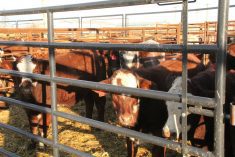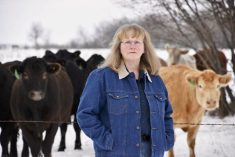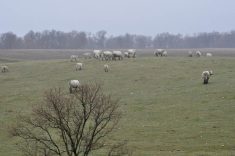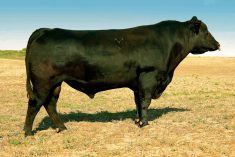For every one they have confirmed there are probably two that they haven’t found or confirmed.”
– RAY ARMBRUSTER CHAIR MCPA ANIMAL HEALTH COMMITTEE
One of the 17 wolves trapped at the Sylvandale pasture north of Fisher Branch in early fall was a female that had travelled 600 kilometres north from central Minnesota.
She was one of the 30 wolves that had been collared as part of a research study tracking wildlife interaction in the 53,000-acre forested Camp Ridley military base just north of Minneapolis where a couple packs of 15 wolves reside.
Read Also

Pig transport stress costs pork sector
Popular livestock trailer designs also increase pig stress during transportation, hitting at meat quality, animal welfare and farm profit, Agriculture and Agri-Food Canada researcher says
The base’s deer population is high and predation on nearby cattle herds has not been a problem.
The satellite location logging capability of the collar on the Manitoba interloper had quit working so her route from Minnesota to Manitoba is not known. But the large number of rural residences between her tagging site and the Interlake didn’t seem to deter her.
Of the collared wolves, the one caught here seems to have had a lower level of wanderlust. One male made it to Green Bay Wisconsin and another took a trip to Thunder Bay.
Biologists attribute the wandering to the pack pressures that push the less dominant animals in search of their own 100-squarekilometre range. Migrating herds of prey like caribou in the Arctic will pull predators along to new territory, but the deer food source of central Minnesota and southern Manitoba doesn’t move en masse.
Of the 30 collared wolves, five are dead from vehicle collisions, more than from any other interactions with humans. Some have been shot. That area of Minnesota has many rural residences with roads bisecting every mile.
In the testing at capture, it was found that 90 per cent of the wolves had Lyme disease, which would have killed most dogs.
The trapped female had joined a pack believed responsible for 50 head of cattle missing from the pasture over the last couple of years.
There were just a couple of calves missing on pasture clean-out this past fall, said manager Ed Appelin. He has seen wolf sign this winter including a small pack running within a mile of the pasture. He said the ongoing wolf problem has deterred about 200 head of patron’s cattle from returning over the last few years.
The Manitoba Agricultural Services Corporation (MASC) compensates livestock producers for losses from predators. By August of this year, MASC had confirmed 586 calves killed across the province with coyotes taking 486, based on evidence left on the carcasses.
Wolves chewed into another 100 calves and 102 cows. The total losses for the calendar year 2008 were over 1,000 head. Calves made up just over half; lamb owners lost 265 head. The province has annually paid out from $347,000 to $531,000 over the last three years, in predator compensation losses on a total of 5,205 head.
The Manitoba Cattle Producers Association (MCPA) wants a strong deterrent program as the hunting habits are passed down through the generations. Losses that have risen 300 per cent, said MCPA animal health committee chair Ray Armbruster.
“For every one they have confirmed there are probably two that they haven’t found or confirmed. We have to talk to the stakeholders, so that we have something we can take to the minister. Perhaps we can have better success by the trappers in the predator removal program with improved equipment or more money for expenses,” he said.
The province’s wolf population is estimated by Conservation to be 4,000 animals. The coyote contingent is at least double that as registered trappers have annually taken from 5,000 to 8,000 pelts over the last few years.


















